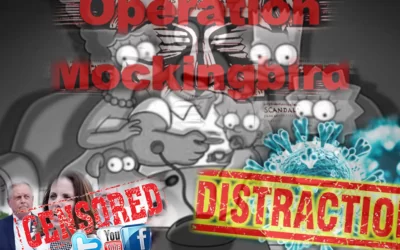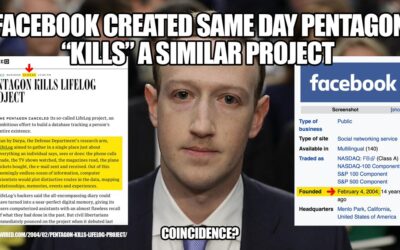
By Corey Kozlowski
Since the inception of the Petrochemical Era and the ability to efficiently and cost effectively mass produce synthetic chemicals, the misdeeds huge of corporations have increased ten fold. The United States-based multinational agricultural biotechnology giant Monsanto is a perfect example. That corporation majestically exemplifies the phrase “increase profit at any cost.” Although it would be nearly impossible to record every crime committed by this company, it appears necessary to give a brief overview of what Monsanto is really about. Specifically, the structure of the organization and the actors participating within it, several of their products produced (3 products: Roundup, Genetically engineered food and rBGH) and their affects on living organisms, and the varied indictments made against the corporation and its affiliates and subsidiaries.
“What you are seeing is not just a consolidation of seed companies, it’s really a consolidation of the entire food chain”
-Fraley R. (co-president of Monsanto’s agricultural sector) 1996
Interestingly enough, through a series of transactions, (mergers and acquisitions, etc..) the Monsanto Corporation that existed from 1901–2000 and the current Monsanto are legally two distinct corporations. Although they share the same name, the same corporate headquarters, many of the same executives and other employees, the agricultural chemicals business is the only segment carried forward from the pre-1997 Monsanto Company to the current Monsanto Company. Here is a brief synopsis of just a few of the spin-offs, restructurings and mergers that are worth noting:
1985: Monsanto purchases G.D. Searle and Co. In this merger, Searle’s aspartame business becomes a separate Monsanto subsidiary, the NutraSweet Company. CEO of NutraSweet, Robert B. Shapiro goes on to become CEO of Monsanto from 1995 to 2000.
1996: Acquires 49.9% of Calgene in April and another 5% in November.
1997: Monsanto spins off its “industrial chemical and fiber divisions” into Solutia Inc.(This transfers the financial liability related to the production and contamination with PCBs at the Illinois and Alabama plants.) In January, Monsanto announces the purchase of Holden’s Foundations Seeds, a privately-held seed business along with its sister sales organization, Corn States Hybrid Service, of Williamsburg and Des Moines, Iowa, respectively. The combined purchase price totals $925M. Furthermore, in April, Monsanto purchases the remaining shares of Calgene.
2000: Monsanto merges with Pharmacia and Upjohn, and then, ceases to exist! Later in the year, Pharmacia forms a new subsidiary, also named Monsanto, for the agricultural divisions.
2002: Pharmacia spins off its Monsanto subsidiary into a new company, the “New Monsanto.” As part of the deal, Monsanto agrees “to indemnify Pharmacia against any liabilities that might be incurred from judgments against Solutia.” As a result, the “New Monsanto” continues to be a party to numerous lawsuits that relate to operations of the old Monsanto.
2005: Monsanto purchases Seminis, the largest seed company in the world not producing corn or soybeans.
2008: Monsanto purchases the Dutch seed company De Ruiter Seeds for about 855 million dollars.
Due to the complexity of restructuring and massive mergers and acquisitions, it is clear as day that Monsanto is seeking absolute vertical integration and wants (and, indeed, in many cases has) monopoly rights over the entire food and agriculture industry. Although the structure of the organization indicates the inherently impersonal and coercive nature of Monsanto’s operations, the true culprit can be found in the fruits of this company’s labors, its products.
The company’s first product was the artificial sweetener saccharin which it sold to the Coca-Cola company. It also introduced caffeine and vanillin to Coca-Cola, and became one of that company’s main suppliers. In 1919, Monsanto established its presence in Europe, by partnering with Graesser’s Chemical Works (Ruabon, Wales) in order to mass produce vanillin, aspirin, rubber and salicylic acid. In its third decade, the 1920s, Monsanto expanded into basic industrial chemicals like sulfuric acid. Since then, it has remained one of the top 10 US chemical companies.
Other major products have included the herbicides 2,4,5-T, DDT, and Agent Orange, used primarily during the Vietnam War as a defoliant. (later proven to be highly carcinogenic to any who come into contact with the solution) The excitotoxin aspartame, and the controversial PCBs were also developed and produced by Monsanto. Also in this decade, Monsanto operated the Dayton Project and later Mounds Laboratory in Miamisburg, Ohio, for the Manhattan Project.
Monsanto has many products and “innovations” that perpetrate the agricultural and biotechnological industry on a global scale. Monsanto is the world’s largest producer of the herbicide “Glyphosate”, commonly used in “Round-Up”. (Glyphosate is the most used herbicide in the USA, and Roundup is the number one selling herbicide worldwide since at least 1980.) As of 2009, the Roundup line of products represents about half of Monsanto’s yearly revenue. Roundup is also at the heart of much controversy in the scientific and health community, concerning human and mammalian side effects. A 2008 scientific study has shown that Roundup formulations and metabolic products cause the death of human embryonic, placental, and umbilical cells in vitro, even at extremely low concentrations.
Furthermore, there is an obvious correlation between the amount of Roundup ingested and the likelihood of serious illness or death. “Ingestion of >85 mL of the concentrated formulation is likely to cause significant toxicity in adults. Gastrointestinal corrosive effects, with mouth, throat and epigastric pain and dysphagia are common. Renal and hepatic impairment are also frequent and usually reflect reduced organ perfusion. Respiratory distress, impaired consciousness, pulmonary oedema, infiltration on chest x-ray, shock, arrythmias, renal failure requiring haemodialysis, metabolic acidosis and hyperkalaemia may supervene in severe cases.” Awesome, right?
Monsanto is also the world’s largest producer of genetically engineered foods and their necessary predecessors, seeds. As of right now, they have an estimated 90% market share in various crops, utilizing amazingly complex techniques to maximize profits. After all,Monsanto scientists became the first to genetically modify a plant cell in 1982. The field of GMOs is a fascinating one that has received much critical analysis in the past few years. Gene splicing in order to increase productivity or to protect the crop against “necessary” herbicides, pesticides and fungicides. (Which, coincidentally, Monsanto sells as well!)
As of January 2009, there has only been ONE human feeding study conducted on genetically modified foods, and as such there has been substantial public outcry for more research into this issue.
As far as product goes, this example probably takes the proverbial cake, rBGH, also known as Bovine Somatotropin. It is a synthetic hormone that is injected into cows in order to increase milk production. IGF-1 is the naturally occurring hormone stimulated by rBGH in the cow’s blood stream, which is directly responsible for the increase in milk production. IGF-1 (Insulin-like growth factor 1) is a natural hormone found in the milk of both humans and cows causing the quick growth of infants. However, many studies (independent of Monsanto) have shown that IGF-1 produces adverse effects in non-infants, behaving as a cancer accelerator in adults and non-infants. This biologically active hormone is associated with breast cancer, colon cancer, lung cancer and prostate cancer. Then, as per usual with giant corporations, a study comes out (funded by Monsanto itself) which claims, “a survey of milk showed no significant difference in rBST levels in milk labeled as “rBST-Free” or “Organic Milk” vs. milk not labeled as such. Furthermore, the existence of an omnipresent revolving door between Monsanto and government agents/agencies (notably, the FDA and EPA) allow for the continuation and, indeed, propagation and support of such policies and products.
Finally, understanding the legal history of this corporation may give clues into its behavior and possible future operations. Even though Monsanto (and many other giant corporate interests) have been able to stave off many lawsuits by out of court settlements, bribery, coercion and perjury, many court decisions have been ruled against Monsanto.
Monsanto was sued, along with Dow and other chemical companies, by veterans for the side effects of its Agent Orange defoliant used by the US military in the during the Vietnam War. More than 21,000,000 US gallons (79,000,000 L) of Agent Orange were sprayed across South Vietnam. According to the post-war Vietnamese government official statistics, 4.8 million Vietnamese were exposed to Agent Orange, resulting in 400,000 deaths and disabilities, and 500,000 children born with some form of birth defect.(This is not to even mention the American Vietnam War Veterans exposure to it) Furthermore, internal documents from the companies that manufactured it reveal that at the time Agent Orange was sold to the U.S. government for use in Vietnam, it was known that it contained a dioxin.
Furthermore, Monsanto was the defendant in the longest civil jury trial in U.S. history, Kemner v. Monsanto. This case ran from February 1984 through October 1987. The case involved a group of plaintiffs who claimed to have been poisoned by dioxin in a 1979 chemical spill that occurred in Sturgeon, Missouri. The trial – expected to last nine to 12 months – spanned more than 600 days in court and included “200 witnesses, 90,000 pages of trial transcripts, 6,000 exhibits and 9,000 evidentiary rulings.” The already complex case was further complicated by a ruling that allowed 65 plaintiffs! Monsanto eventually won this case, however.
More recently, Monsanto lost a series of court decisions resulting in $700 million in damages being awarded to thousands of residents of the town of Annistan, Alabama that had been polluted over a period of years by Monsanto’s PCB byproducts. After the public recognized this, the EPA came in and incinerated large quantities of Sarin and Mustard Gas produced by Monsanto. On February 22, 2002 Monsanto was found guilty of “negligence, wantonness, suppression of truth, nuisance, trespass, and outrage.” Another legal issue Monsanto dealt with was provided by the world’s largest agrichemical company, Switzerland’s Syngenta, in 2004. It launched a US lawsuit charging Monsanto with “using coercive tactics to monopolize markets.” In January 2005, Monsanto agreed to pay a $1.5m fine for bribing an Indonesian official, simultaneously Monsanto also admitted to paying bribes to a number of other high-ranking Indonesian officials between 1997 and 2002. Monsanto faced criminal and civil charges from both the SEC and the US Department of Justice. (Orwellian language not withstanding) Monsanto agreed to pay $1m to the Department of Justice and $500,000 to the SEC to settle the bribe charge and other related violations. Apparently bribery begets bribery.
The list of legitimate evidence against Monsanto committing almost every crime imaginable is exhaustible and painstakingly accurate. This is just a fraction of it, this company is responsible for amazingly detrimental socio-economic distress. It does not seem that this company is going to change its ways anytime soon. Monsanto gave $186,250 to federal candidates in the 2008 election cycle through its political action committees. (42% Dem, 58%Rep.) The company spent $8,831,120 for lobbying in 2008 alone. It does not take a genius to see a serious conflict of interests here. The corporations do not care, and neither does government. In the words of George Carlin, “Its all one big stroke job.”
ASK QUESTIONS, DEMAND ANSWERS!
Citations:
1.) (Video) The Corporation
2.) (Video) The World According to Monsanto
3.) http://www.greenpeace.org/international/news/monsanto_movie080307
4.) http://www.corpwatch.org/article.php?id=11638
5.) http://www.washingtonpost.com/ac2/wp-dyn/A54914-2002Feb22?language=printer
6.) http://www.washingtonpost.com/ac2/wp-dyn?pagename=article&contentId=A46648-2001Dec31
7.) http://news.bbc.co.uk/2/hi/health/3798581.stm
8.) http://www.corporatewatch.org.uk/?lid=210
9.) http://lawprofessors.typepad.com/whitecollarcrime_blog/2005/01/monsanto_settle.html
10.) http://www.forbes.com/2009/01/22/economic-growth-corruption-biz-corruption09-cx_rf_0122fisman.html
11.) http://www.sec.gov/litigation/litreleases/lr19023.htm
12.) http://www.sourcewatch.org/index.php?title=Labeling_Issues
%2C_Revolving_Doors%2C_rBGH%2C_Bribery_and_Monsanto
13.) http://www.huffingtonpost.com/christine-escobar/hes-back-former-vp-at-mon_b_228792.html



